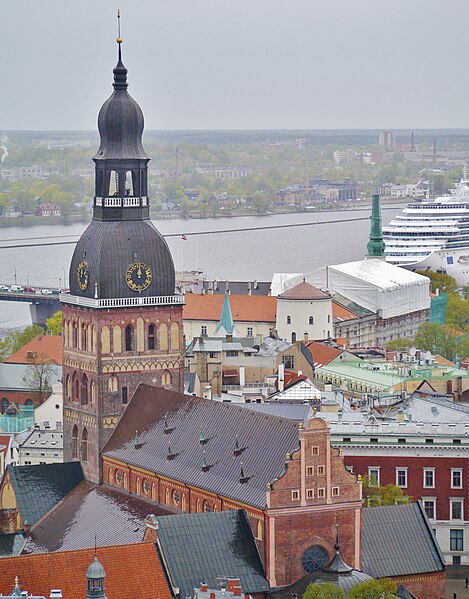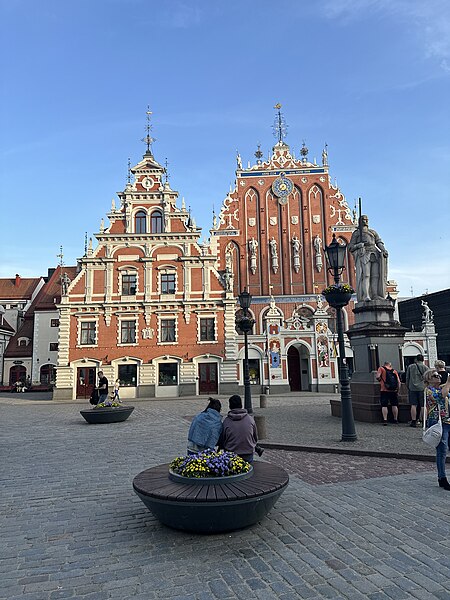The history of Latvia began around 9000 BC with the end of the last glacial period in northern Europe. Ancient Baltic peoples arrived in the area during the second millennium BC, and four distinct tribal realms in Latvia's territory were identifiable towards the end of the first millennium AD. Latvia's principal river Daugava, was at the head of an important trade route from the Baltic region through Russia into southern Europe and the Middle East that was used by the Vikings and later Nordic and German traders.
Baltic bronze necklace from the village of Aizkraukle, Latvia dating to 12th century AD now in the British Museum.
Comb pottery example from Estonia, 4000–2000 BC
Neolithic bone tools
Āraiši lake dwelling site dates back to the late Iron Age
Riga is the capital, primate, and the largest city of Latvia, as well as the most populous city in the Baltic States. Home to 609,489 inhabitants, the city accounts for a third of Latvia's total population. The population of Riga metropolitan area, which stretches beyond the city limits, is estimated at 860,142. The city lies on the Gulf of Riga at the mouth of the Daugava river where it meets the Baltic Sea. Riga's territory covers 307.17 km2 (118.60 sq mi) and lies 1–10 m (3–33 ft) above sea level on a flat and sandy plain.
Image: Riga downtown
Image: Old Riga Vecrīga Town Hall
Image: Riga Petrikirche Blick vom Turm zum Dom 3
Image: House of the Blackheads in Riga








